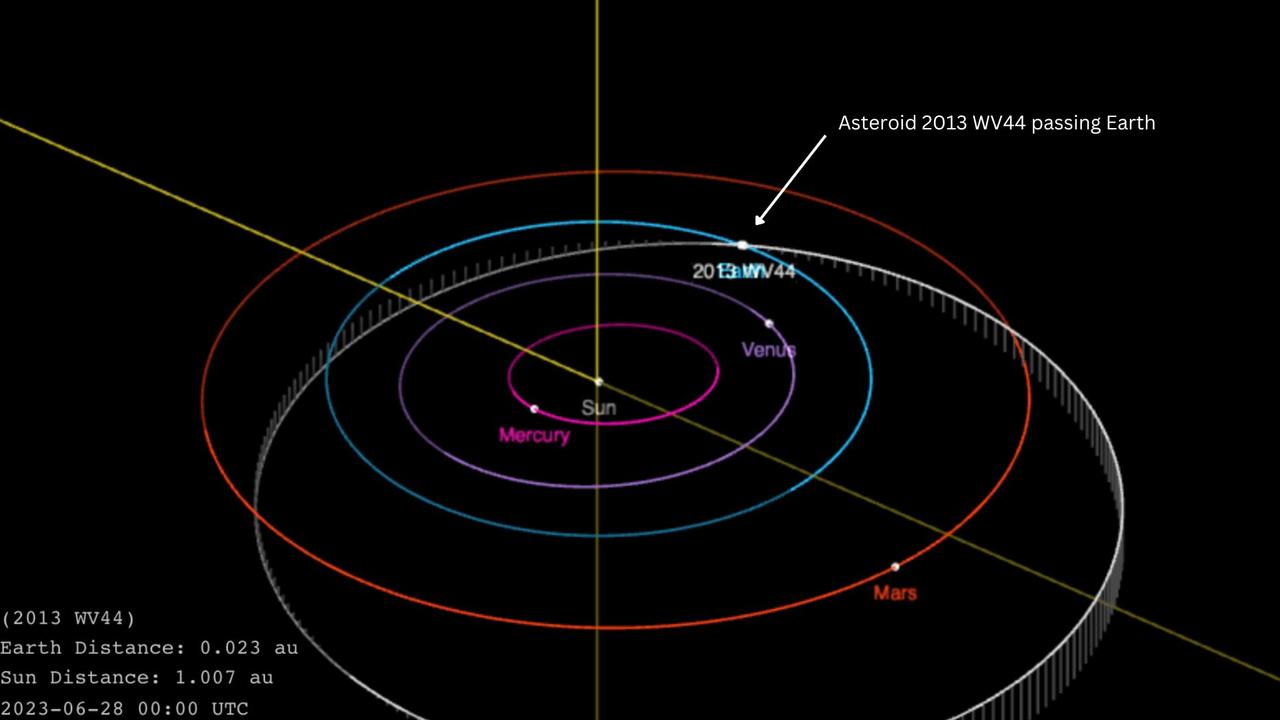Asteroid bigger than the size of Parliament House is coming for Earth
An asteroid that’s half the size of the Eiffel Tower is currently plummeting towards Earth 34 times faster than the speed of sound.

An asteroid that has a combined length of three Olympic-sized swimming pools is catapulting towards earth at a speed that will see it adjacent to the planet on Wednesday evening.
NASA reports the space mass, coined “2013 WV44”, will pass our skies at its closest point at 7pm AEST, travelling at about 34 times the speed of sound.
The foreign rocky body got its name from the first time it was sighted, just under a decade ago. It measures 91m in diameter and is dashing through space at 39,000km per hour or 11km per second.
Wednesday night will mark the third time 2013 WV44 journeyed past Earth, with it last spotted five years ago in 2018, after it was established in 2013.
While the asteroid is slowly closing in on Earth each time it orbits, astrophysicist Brad Tucker says it‘s still millions of kilometres away from our atmosphere.

“It’ll be passing by about 3.3 million kilometres away – that sounds very large, which is a good thing,” he told Sunrise.
“(We) say anything within 10 times the distance the moon is, that’s the sort of zone worth worrying about.”
Previously, the asteroid – which is larger than Parliament House – was 23 million kilometres away in 2013 and just over 18 million kilometres away in 2018.
It’s forecasted the asteroid will return again in another five years, at a safer distance of 6,890,000km from Earth, 7 News reports.
Asteroid 2013 WV44 is the largest space mass passing Earth within the next 24 hours, according to the NASA Jet Propulsion Laboratory.
Also passing earth on Wednesday is asteroid 2023 MH4 which is the size of a bus and is just over a million kilometres away, followed by 2023 MS2 and 2023 MO2 which are both the size of a plane.

Another asteroid called 2023 MG4 will pass Earth on Thursday that’s about 34 meters in size and will be 4.8 million kilometres away from our planet when it reaches its closest point.
“We watch these asteroids because they come close enough that in the change over time, they may get even closer to Earth and that‘s what we worry (about),” Dr Tucker said.
Another reason NASA monitors asteroids is to do with research, with the space agency attempting to change an asteroid’s direction last year.
“NASA tried to test the changing of an orbit of an asteroid to see, if one got really close, could we alter its orbit if it was headed for us,” Dr Tucker said.
If an asteroid were to hit Earth, the astrophysicist added it would do a mid air explosion, which could do a lot of damage depending on how close it is to the planet’s core.
“Something 160 metres could actually do a large shockwave over quite a large city,” he said.
“The fragments themselves would be much smaller but still create some crater on the ground but it‘s that explosion in the air that we worry about.”






